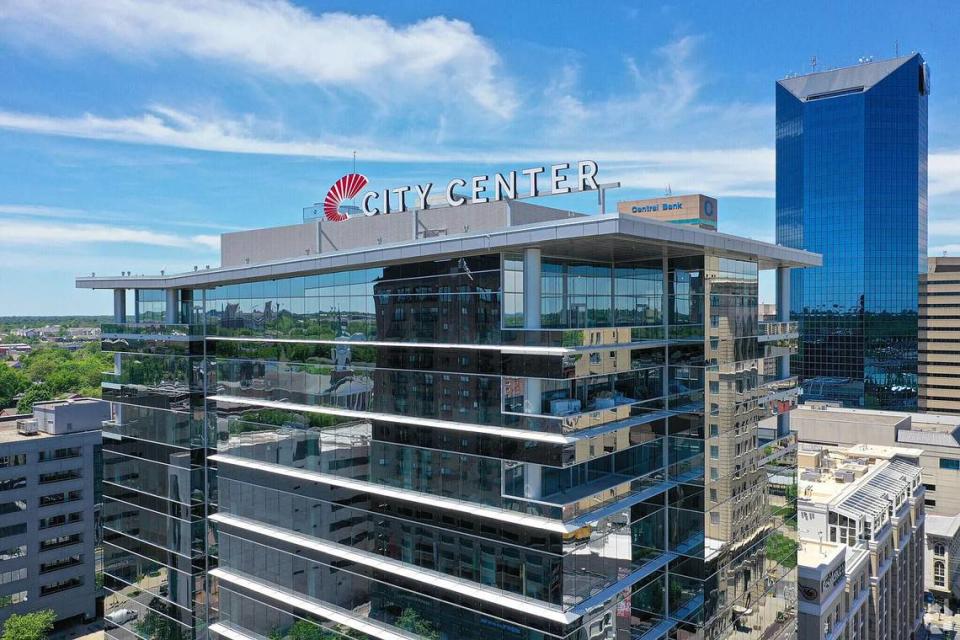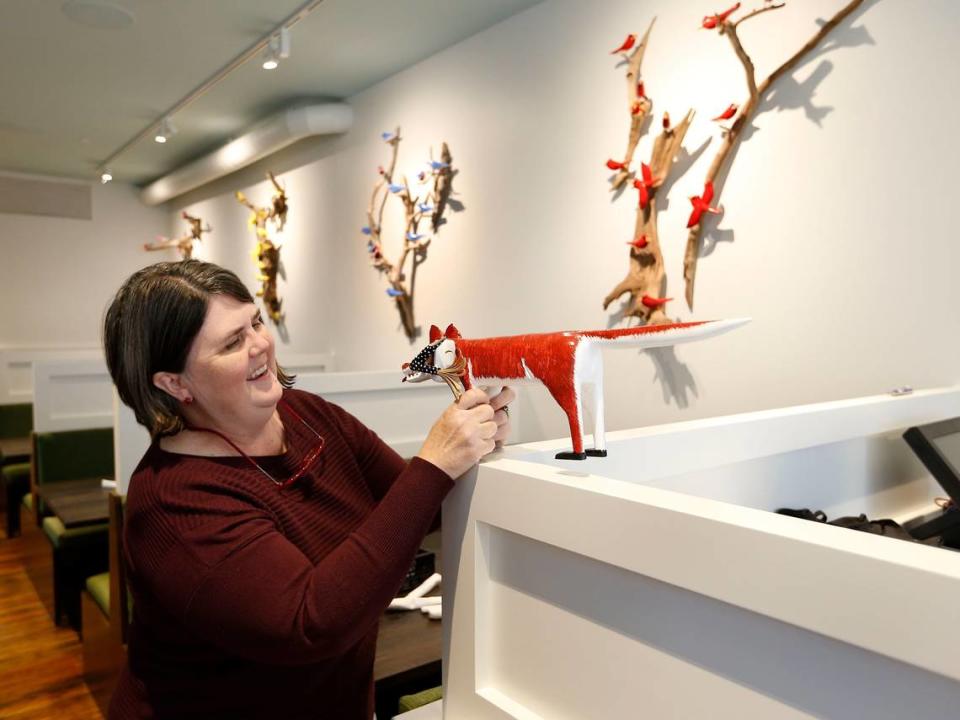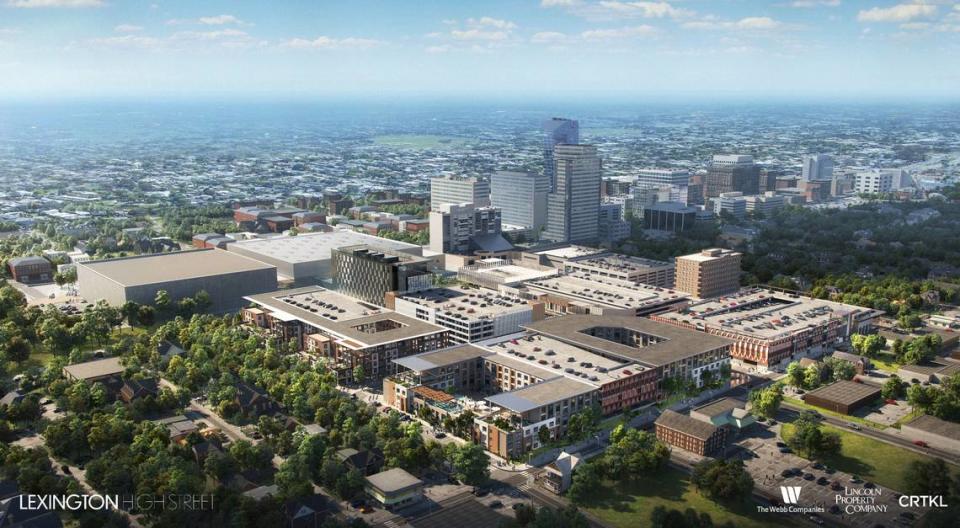Has Lexington’s downtown recovered from the pandemic? What numbers, business owners say
While other downtown districts have endured workforce exoduses in the wake of the pandemic, as employees moved to remote or hybrid work schedules, Lexington may have bucked that trend, data shows.
But some restaurant and other retail business owners say lunchtime business isn’t as robust as it was prior to March 2020, when the coronavirus pandemic sent office workers home in droves.
Occupancy and vacancy rates for office space has remained largely the same, according to data from NAI Isaac, a real estate brokerage firm that monitors vacancy and occupancy rates for office, retail and industrial spaces across Lexington.
In 2019, the vacancy rate for 51 downtown office buildings was 11.6%.
In 2022, the vacancy rate for the same number of properties was 9.8%.
That’s a pretty typical fluctuation for vacancy rates for downtown properties, real estate agents and building owners said.
However, numbers are only part of the story when it comes to real estate.
“Long-term leases have helped to keep office occupancy numbers stable,” said Al Isaac, president of NAI Isaac. “We haven’t seen dramatic swings in occupancy/vacancy numbers such as larger markets may have.”
Dudley Webb of the Webb Companies, which has multiple downtown properties including City Center, agreed.
“Long-term leases helped protect us,” Webb said. Still, the market in general has “been very healthy and we aren’t losing people.”
Changes in office space, sizes
The types of office spaces some companies want is now changing, Webb and others in commercial real estate said.
Some companies are downsizing. The amount of space needed in a hybrid work environment, where employees only work in the office a few days a week, is sometimes less than it was prior to the coronavirus pandemic.
A recent space study for the Lexington-Fayette Urban County Government showed it needed much less space than it currently uses across multiple buildings in downtown. That study showed it needed 160,000 square feet of space — a significant drop from the 240,000 square feet it currently occupies.
The city is trying to determine if it should gut and renovate the space it currently has, including the former Lafayette Hotel on Main Street, or move to a different location. An analysis of possible spaces in downtown is expected to come soon.
Other companies are also looking at different types of space, said James Schrader, of Schrader Commercial Properties. Some need more meeting space, such as conference rooms kitted out with the latest technology, and less individual office space.
“When a company’s lease expires, they are re-imagining what that space looks like,” Schrader said.
Not all companies want a smaller foot print, Webb said.
“Some want more space for social distancing,” Webb said.
Prior to the pandemic, the open office plan — where employees were at work stations in a large room — was on its way out. Noise and lack of privacy associated with open floor space plans led to changes in the market.
“Today we are seeing a more balanced floor plan with some open areas and some private offices. From industry to industry, the floor plan requirements can be different,” Isaac said.
Webb said he has not seen a dramatic decline in demand for space downtown. City Center, which includes two hotels, a large office building, retail and restaurants, is at 98% capacity, he said.

“The hotels have been running at 90% capacity,” Webb said of the two Marriott properties — Marriott Residence Inn and Marriott City Center. “That’s largely been tourism instead of business travel.”
Some restaurants decline while others feel the rush
Jim Sawyer, owner of popular restaurant Sawyer’s Downtown Bar and Grill, has witnessed dramatic swings in the lunch crowd during his decades-long career.
Sawyer’s location on Main Street near North Broadway closed in 2021 due to a steep decrease in business caused not only by people working from home but lack of events at Central Bank Center and Rupp Arena, a key driver of business to the restaurant known for its burgers and chili. Sawyer, like so many restaurant owners, also struggled to find and keep staff during 2020 and 2021.
Sawyer’s reopened in 2022 in City Center.
Sawyer said the lunchtime crowd has largely returned. Some days there are lines to get into the popular restaurant.
But overall, Sawyer said his lunchtime business has been affected by remote and hybrid work schedules.
“I would say it’s about 75% (of what business once was),” Sawyer said.
Many of the downtown business owners and workers Sawyer knows have moved to hybrid schedules and are in the office only one to three days per week, he said.
“I had a guy come in the other day and say he shouldn’t have come in to the office because he was the only one in that day,” Sawyer said.
Still, nighttime business, particularly when there are concerts and events at Central Bank Center, has helped bring customers back to downtown, he said.
Josef Ferguson, general manager of Zim’s Cafe and the Thirsty Fox, which is located in the former Fayette County Courthouse, agreed with Sawyer’s assessment — the lunch crowd is about 75% of what it was prior to the pandemic. The Quita Michel’s restaurant and bar serves specialty sandwiches and drinks.
“We are still busier at lunch than we are at dinner during the weeknights,” Ferguson said.

The Thirsty Fox is launching a curated dessert menu to help draw more people to the bar in the evenings. The bar still does brisk business on Thursday, Friday and Saturday nights, he said.
The early evening business was hampered after LexPark announced in January it would extend parking enforcement hours at meters until 9 p.m. weeknights. The move was necessary to make up for a shortfall caused by a drop in business during the pandemic. LexPark scaled back some of its new enforcement hours, including not charging for meters on the weekends. That helped business rebound, Ferguson said.
But other downtown restaurant owners say business came roaring back in 2022 after many COVID restrictions were dropped.
The Courtyard Deli, a downtown mainstay for 30 years, has had so much business it had to quit delivery services, said Krissy Fraser, owner and chef.
Its pick up services are still popular and the lunchtime eatery, a favorite of lawyers, is doing brisk lunch business. Fraser said the deli, on Church Street in the back of Heritage Antiques, has been helped by sterling reviews online, which is bringing more new customers and younger visitors to the deli, known for Fraser’s creative sandwich creations and daily specials. The deli has been closed for several weeks after Fraser broke her shoulder.
She’s hoping to re-open the Tuesday after Labor Day.
“We’ve been extremely busy,” Fraser said. “When people began to feel comfortable again, they came back. I think they wanted to eat out.”
Others said they are optimistic downtown will continue to thrive.
Allen McDaniel, executive director of the Downtown Lexington Partnership, said there’s a lot of movement and energy in downtown Lexington. The partnership will hold its annual state of downtown event in late September. It’s in the process of gathering data on vacancy and occupancy rates as part of that annual event.
“Downtown Lexington Partnership (DLP) is optimistic and excited about the post-pandemic recovery of Downtown Lexington. Recent announcements like the proposed development plans for 325 Main (formerly Festival Market), the ground breaking of Town Branch Park, and the High Street Redevelopment Project are the perfect trio example how downtown is thriving and grants the ability to live, work, and play, all here in the heart of our city,” McDaniel said.


